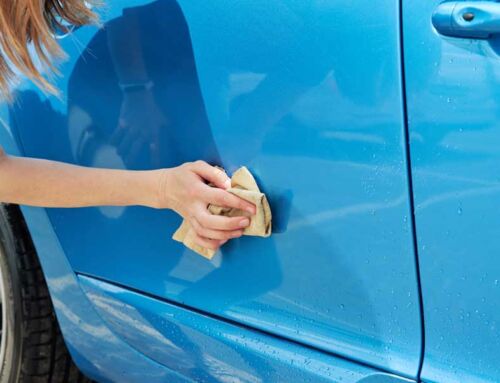Having a scratched instrument panel is not only unsightly but impairs your ability to read the important information you need to see. You depend on your instrument panel for a read on temperature, fuel, mileage, gas consumption, signaling, warning lights and other vehicle settings.
Here are some dos and don’ts for restoring your instrument panel to a safe and like-new condition.
How Instrument Panels Get Scratched
The instrument panel covers in today’s vehicles are typically made from polycarbonate or acrylic, requiring some TLC to keep clean and clear.
These covers are in place to protect your instrument panel from dirt, dust, damage, and moisture that can permanently damage the panel and accuracy of controls and readings.
Damage may come from accidentally scraping keys across the panel or previously using harsh cleaning ingredients or glass cleaner and paper towels for cleaning.
The Restoration Process
Due to the surface, light scratches need a less abrasive product followed up with a light protective coating.
Deeper scratches require a more aggressive polishing followed up with a thicker protective coating.
The simple restoration process is the same for both light and deeper scratches:
- Clean
- Buff/Polish
- Apply protective coating
Most light scratches can be removed with a light touch while the instrument panel remains in place. For deeper scratches, you may have to remove the panel to really get the results you need.
Cleaning
Always use microfiber clothes when cleaning because they won’t leave behind fibers, and they are soft enough to prevent further scratches.
Use one cloth to clean with a cleaner specifically designed for vehicle detailing. It should be gentle yet able to remove smudges, stains, and discoloration from the surface. Never use glass cleaner or other household cleaners on instrument panels because they can cause more tiny scratches.
When clean, dry thoroughly with a dry microfiber cloth.
Inspect the panel after cleaning to make sure the entire panel is clean. Buffing an unclean panel may result in more scratches or other damage.
Buffing/Polishing
Now that the instrument panel is clean, those scratches will be even easier to see.
Using plastic cleaner, spray a good amount of the product on to a dry, clean microfiber cloth. Work the cleaner into the panel with gentle yet firm pressure until completely covered. Much like car wax, don’t let the cleaner harden or dry on to the panel.
Wipe all plastic cleaner away with a dry, clean microfiber cloth.
There are some spots that may need another coat, so repeat applying polish, buffing, and wiping away until you’re satisfied with the results.
Protective Coating
Now that the instrument panel has been cleaned and polished, it’s a bit more susceptible to further scratches until coated.
A light wax or protective plastic coating product should be applied to provide protection from further scratches, damage, or discoloration/staining.
Conclusion
Keeping your vehicle instrument panel clean and clear from scratches is important for your safety and value of your vehicle.
To keep your vehicle in top condition from paint or collision damage, don’t hesitate to schedule an appointment with the auto body experts at Downtown Autobody in Rohnert Park.





